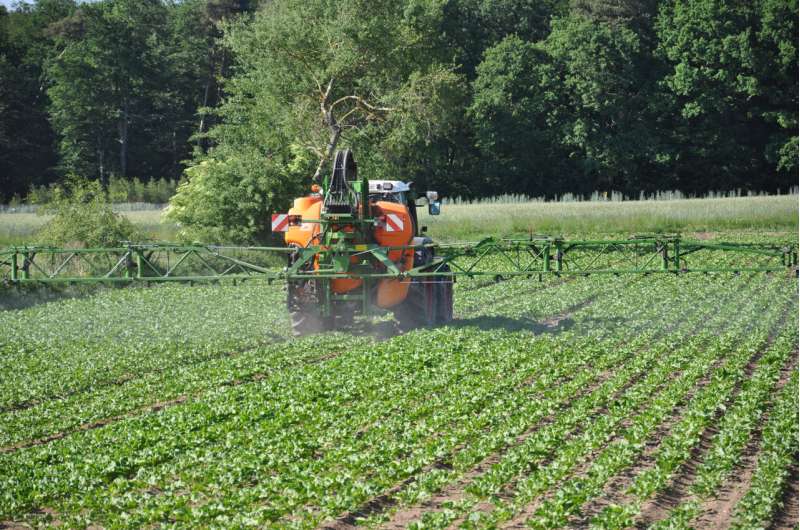This article has been reviewed according to Science X's editorial process and policies. Editors have highlighted the following attributes while ensuring the content's credibility:
fact-checked
peer-reviewed publication
trusted source
proofread
How the use of chemicals and biodiversity loss are connected

Declining biodiversity threatens the very basis of human life. Science contends that there are many reasons for this decline. However, while much research is being conducted into the connection between species decline on the one hand and loss of habitats, invasion by non-native species or climate change on the other, science is giving less attention to the impact of chemicals on biodiversity.
A recent study by a team of researchers led by Professor Henner Hollert, Dr. Francisco Sylvester and Fabian Weichert from Goethe University Frankfurt corroborates this. Their Comment article has been published in Nature Ecology and Evolution.
The team has analyzed in depth the scientific literature on this topic from 1990 to 2021. According to their analysis, the very many research papers on environmental pollution through chemicals were published in only a small number of highly specialized ecotoxicological journals, in which papers on biodiversity loss are only occasionally found.
"This suggests that the field is highly encapsulated, which is in stark contrast to publication behavior in relation to other causes of global biodiversity loss," says Hollert. "Research on the environmental impact of chemicals is still mostly dissociated from the assessment of biodiversity loss."
The authors call for a stronger interdisciplinary focus in research so that the impacts of chemical substances on biodiversity can be better understood and mitigated. What makes the researchers optimistic here is the fact that there have been many methodological advances in ecotoxicology and ecology in recent years. For example, with the help of state-of-the-art chemical and effect-based analytics as well as big data science it is possible to detect thousands of known and unknown substances in environmental samples at the same time.
In addition, there are technologies for remote environmental monitoring, for example with satellites, as well as computer models for predicting the ecological risks of chemicals and methods for determining biodiversity with the help of environmental DNA.
However, the scientists also see quite considerable challenges despite the interdisciplinary approach. For example, basic data are often lacking; each area under study has specific characteristics; the processes at ecosystem scale are complex. To meet these challenges, the researchers have made 16 recommendations. They suggest, for example, obligating industry to make relevant data public. Or they propose developing ecological test models that cover not only individual organisms but also populations, communities or even entire ecosystems.
More information: Francisco Sylvester et al., Better integration of chemical pollution research will further our understanding of biodiversity loss, Nature Ecology and Evolution (2023). DOI: 10.1038/s41559-023-02117-6. www.nature.com/articles/s41559-023-02117-6
Journal information: Nature Ecology & Evolution
Provided by Goethe University Frankfurt am Main


















